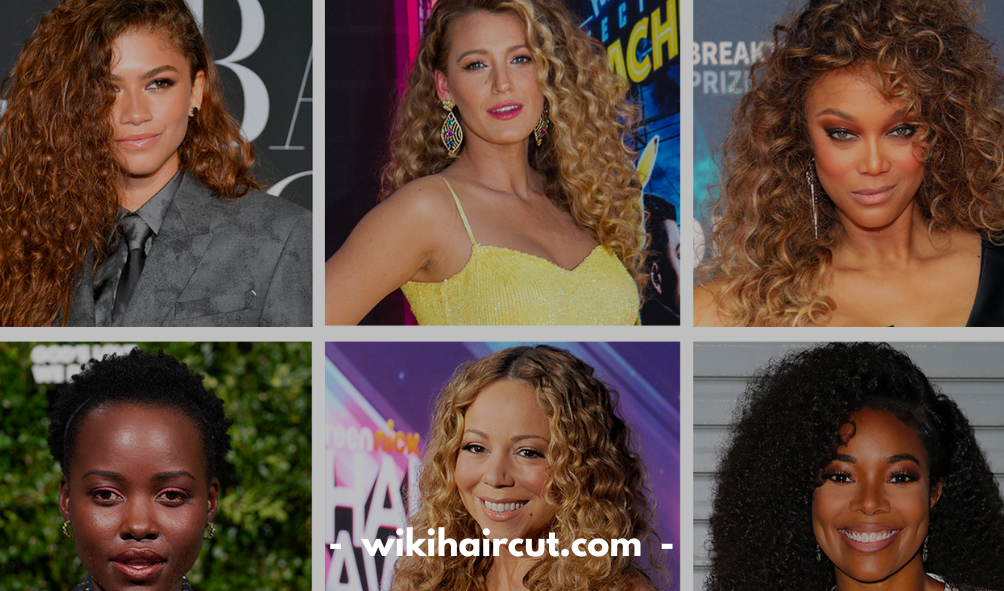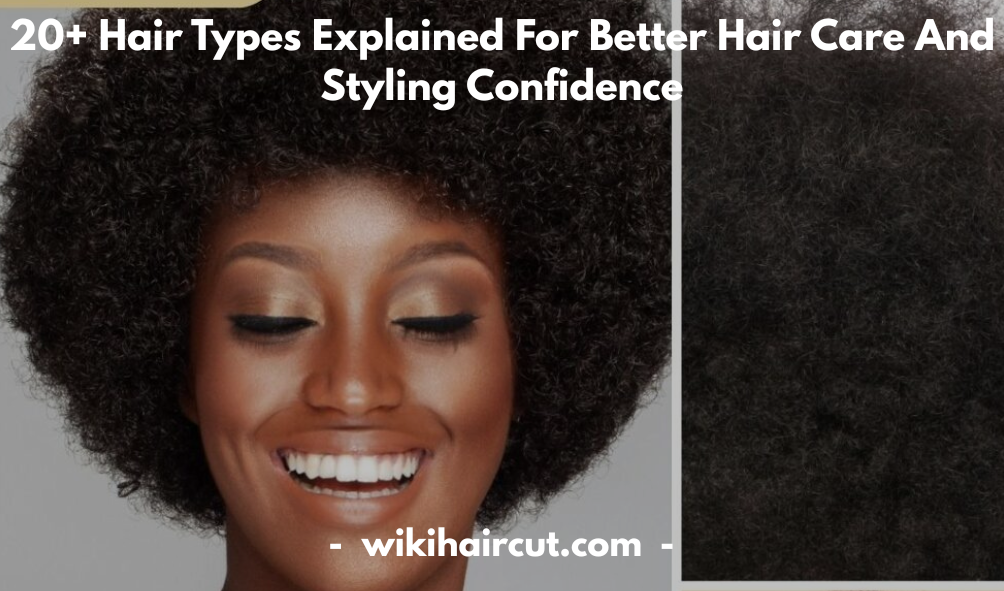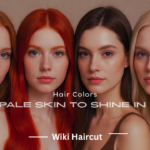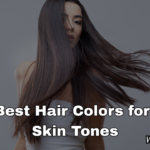Hair types are more than just labels—they’re the foundation of your entire hair care journey. Whether you’re trying to grow your hair longer, style it for an event, or treat it after damage, knowing your hair type is the first step toward making informed decisions. Your hair’s curl pattern, thickness, porosity, and oil production all influence how it reacts to styling tools, humidity, and products. This means what works for your friend might completely backfire on you if your hair type is different. Identifying your hair type can help you choose the right shampoo, conditioner, serums, masks, brushes, and even hairstyles that flatter and support your strands.
Understanding the Basics of Hair Texture and Curl Pattern
Hair texture refers to the thickness or diameter of the individual hair strand—fine, medium, or coarse—while curl pattern describes the shape your hair takes when it’s dry. Curl patterns range from straight (Type 1) to tight coils (Type 4), with subcategories in each type. Understanding both texture and curl pattern helps you better manage your hair’s response to styling, moisture, and environmental conditions. For example, coarse curly hair requires more hydration and gentler handling, while fine straight hair is easily weighed down by heavy products. Knowing both gives you an upper hand in customizing your care.
The Science Behind Hair Types
Scientifically, your hair type is influenced by the shape of the follicle and the direction in which it grows. Round follicles produce straight hair, oval ones result in wavy textures, and more flattened or elliptical follicles give rise to curls and coils. Genetics play the biggest role, determining follicle shape, hair density, oil secretion, and strand thickness. Hormones and age also affect your hair over time—puberty, pregnancy, menopause, or certain medical conditions can change your hair type. It’s why some people suddenly find their hair curlier or straighter later in life.
The Hair Types Chart Explained
Overview of the Hair Typing System
The Andre Walker Hair Typing System classifies hair into four categories:
- Type 1: Straight
- Type 2: Wavy
- Type 3: Curly
- Type 4: Coily/Kinky
Each type is further divided into A, B, and C subcategories based on the hair’s thickness, density, and curl tightness. This system gives people a clear reference to identify their natural hair texture. For instance, Type 3A hair is made up of big, loose curls, while Type 4C has tight, dense coils with minimal definition.
The Role of Andre Walker’s Hair Typing System
Developed by Oprah Winfrey’s hairstylist, Andre Walker, this system revolutionized the way people understand hair. Before it, there was little standardized information for identifying hair textures—especially for curly and coily hair. His system helped stylists and consumers tailor their hair routines by addressing specific needs of each type. Though it has evolved and received criticism for not being inclusive of all textures (especially mixed hair), it still serves as a foundational guide in the hair care world.
How to Use a Hair Types Chart Effectively
A hair type chart is only effective if used accurately. First, observe your freshly washed and air-dried hair without any product to determine your natural curl pattern. Next, compare it to a visual chart to match your texture and curl shape. Don’t just go by looks—feel the texture, test porosity, and note if your hair tends to frizz or flatten. Combine this knowledge with porosity and density tests to build a comprehensive hair profile, allowing you to pick the right moisturizers, cleansers, and styling techniques.

Straight Hair – Type 1 Hair
1A Hair Type
1A hair is the straightest of all textures. It lies flat against the scalp, has no wave or curl, and is usually very fine and soft. Because it lacks texture, it tends to get oily quickly as sebum travels down the hair shaft with ease. This hair type struggles to hold curls or volume but is admired for its natural shine and silkiness. Minimal heat styling is required, but volumizing shampoos and dry shampoos are essential for keeping oil at bay.
1B Hair Type
1B hair is still straight but has more body and volume than 1A. It may have a slight wave at the ends, making it a bit more versatile for styling. It also has more texture, which allows it to hold curls slightly better than 1A. This hair type usually needs a bit more moisture than 1A, especially if heat tools are regularly used.
1C Hair Type
1C hair is the thickest and coarsest among straight hair types. It often appears straight with a hint of natural wave, especially in humid conditions. This type can be frizz-prone and resistant to styling. It holds shape better than 1A and 1B and is more resilient to heat. Anti-frizz serums and hydrating leave-in conditioners help manage this hair type.
Wavy Hair – Type 2 Hair
2A Hair Type
2A hair has a soft, tousled wave pattern that lays close to the head. The waves are loose and undefined, often forming a gentle “S” shape. This type tends to lack volume at the roots and can get weighed down easily. Lightweight products like sea salt sprays and foam-based mousses enhance texture without flattening it.
2B Hair Type
2B hair has more prominent waves, starting mid-shaft and forming tighter “S” shapes. It’s prone to frizz, especially in humidity, and requires a bit more moisture. Lightweight curl-enhancing creams or leave-ins can help define waves and tame frizz. Air drying or diffusing works best for styling.
2C Hair Type
2C hair is a mix between wavy and curly. It features defined waves with some spirals and tends to be coarse and thick. It’s highly prone to frizz and often needs deep hydration. Products like curl-defining gels and creams help lock in moisture while defining texture.
Curly Hair – Type 3 Hair
3A Hair Type
3A hair consists of large, soft, spiral curls with a shiny appearance. It’s easy to manage but can become flat or frizzy if weighed down with product. Hydrating shampoos and curl creams enhance bounce and definition without sacrificing volume. Avoid sulfates and heavy silicones.
3B Hair Type
3B hair has tighter curls that are medium to coarse in texture. This type of hair has more volume but is more prone to dryness and frizz. Deep conditioning weekly, using a wide-tooth comb, and applying leave-in products while damp can prevent damage and keep curls bouncy.
3C Hair Type
3C hair features tight, dense curls resembling corkscrews. It’s often mistaken for Type 4 due to its density but lacks the kinkiness. 3C hair can shrink significantly when dry and needs moisture-rich products like shea butter, aloe vera gel, and coconut oil. Avoid heat and detangle with fingers.
Coily Hair – Type 4 Hair
4A Hair Type
4A hair has soft, tight coils that retain moisture relatively well compared to 4B and 4C. It has a visible curl pattern and benefits from creamy products and occasional protective styles like twists and braids. Shrinkage can be up to 70%, so stretch styles help enhance length.
4B Hair Type
4B hair has sharp angles and a Z-shaped curl pattern. It is more prone to breakage and requires gentle detangling. This hair type thrives on leave-in conditioners, hair butters, and regular deep conditioning. Protective styling and avoiding manipulation help maintain health.
4C Hair Type
4C hair has no defined curl pattern and is the most delicate and voluminous of all hair types. It tends to shrink up to 75% and needs intense hydration and minimal manipulation. LOC (Liquid, Oil, Cream) methods are great for moisture retention. Regular trimming prevents breakage.
Hair Types by Ethnicity and Genetics
Hair Types in Black Hair
Black hair textures typically range from 3B to 4C and have unique structural and cultural elements. It’s often drier due to the tightness of curls that prevent sebum from spreading easily. Hair care in Black communities includes protective styling, low manipulation, and ingredients like castor oil, aloe vera, and avocado. Black hair is versatile, strong, and often carries deep cultural significance.
Hair Types by Region and Culture
- Asian hair: Mostly Type 1, straight, thick, and grows the fastest.
- European hair: Varies widely from 1A to 3C. Fine or wavy textures are common.
- Middle Eastern hair: Often thick, Type 2 to 3, prone to dryness.
- Afro-Caribbean hair: Primarily Type 4, requiring high-moisture routines
Hair Porosity and Its Relationship with Hair Types
What Is Hair Porosity?
Hair porosity refers to your hair’s ability to absorb and retain moisture. It’s determined by the condition of the cuticle layer—the outermost layer of the hair strand. This layer controls how easily moisture and oils pass in and out of your hair. There are three levels of porosity: low, medium (normal), and high. Understanding your porosity is just as important as knowing your curl pattern because it impacts how products penetrate and work on your hair.
Low, Medium, and High Porosity Explained
- Low Porosity Hair: The cuticles are tightly closed, making it hard for water or products to enter the shaft. This hair often repels water and takes a long time to dry. Lightweight products and heat (like warm water or steam) can help open the cuticle and allow moisture in.
- Medium Porosity Hair: The cuticle is slightly open, allowing moisture to enter and stay in. This hair type is typically healthy, shiny, and easy to manage. It responds well to most products and holds styles for longer.
- High Porosity Hair: The cuticle layer is raised or damaged, often due to chemical processing, heat, or genetics. While moisture easily enters the shaft, it also escapes quickly. This leads to dry, frizzy hair that needs richer, sealing products like heavy creams and oils to lock in hydration.
How Porosity Affects Product Absorption
Products that work for one porosity level might not work for another. For example, thick oils like castor oil may sit on low porosity hair and cause buildup, while high porosity hair may absorb them rapidly but still need extra layers of hydration. Understanding your porosity ensures you’re not wasting time or money on ineffective products. A simple test: drop a strand of clean hair into a glass of water. If it floats, your hair is likely low porosity. If it sinks quickly, you may have high porosity.
Hair Density and Strand Thickness
What Is Hair Density?
Hair density refers to how many strands of hair you have per square inch on your scalp. You can have thick hair (lots of strands) or thin hair (fewer strands), regardless of whether each individual strand is fine or coarse. Density is often confused with strand thickness, but they’re separate traits. To check your density, look at your scalp in natural light. If you can see a lot of your scalp easily, you may have low density. If it’s hard to see, your density is high.
Fine, Medium, and Coarse Hair Strands
- Fine Hair: Individual strands are small in diameter, often fragile and easily weighed down by heavy products.
- Medium Hair: This is the most common strand type. It’s thicker than fine hair and holds styles well without being overly heavy.
- Coarse Hair: Thick and strong individual strands. Coarse hair can be dry or rough and may require more moisturizing products and heat protectants when styling.
Why Both Density and Thickness Matter
A person can have fine hair that is dense (lots of fine strands) or coarse hair that is sparse (fewer thick strands). Your combination of density and strand thickness will determine how your hair behaves and which products to use. For example, low-density fine hair benefits from volumizing mousses, while high-density coarse hair may need heavier butters and oils to maintain moisture and manage frizz.
Determining Your Hair Type at Home
Step-by-Step Method to Find Your Hair Type
- Wash and Air Dry: Start with clean, product-free hair. Use a gentle shampoo, don’t apply conditioner or styling products, and let your hair air-dry.
- Observe the Pattern: Look in the mirror. Is your hair straight, wavy, curly, or coily? This gives you the base (1 to 4).
- Check for Subtype (A, B, or C): Examine the tightness or looseness of the wave or curl.
- Test Porosity: Try the water glass method or feel how quickly your hair absorbs leave-in conditioner.
- Test Thickness: Rub a single strand between your fingers. If it feels barely there, it’s fine. If it feels wiry, it’s coarse.
- Check Density: Part your hair and see how much scalp shows.
Common Mistakes in Identifying Hair Type
- Testing while hair is dirty or full of product
- Confusing frizz with curl type
- Not factoring in shrinkage for curly/coily hair
- Assuming one hair type across the entire head (many people have mixed textures!)
When to Retest Your Hair Type
Hair type can change due to hormonal shifts, aging, health conditions, or chemical/heat damage. Retest:
- After pregnancy
- Post-chemotherapy
- After coloring or relaxing treatments
- With significant lifestyle changes (diet, environment)
Best Products for Each Hair Type
Shampoos and Conditioners by Type
- Type 1 (Straight Hair): Volumizing shampoos, lightweight conditioners, dry shampoos
- Type 2 (Wavy Hair): Sulfate-free shampoos, curl-enhancing conditioners
- Type 3 (Curly Hair): Moisturizing cleansers, co-washes, silicone-free conditioners
- Type 4 (Coily Hair): Hydrating cowashes, leave-in conditioners, rich creams
Stylers, Creams, and Oils Based on Curl Pattern
- Straight hair: Lightweight serums and sprays
- Wavy hair: Mousse, light gel, curl enhancers
- Curly hair: Curl creams, styling puddings, aloe-based gels
- Coily hair: Butters, oils (shea, castor), LOC/LCO methods
DIY Natural Treatments for Each Type
- 1A-1C: Apple cider vinegar rinses to add shine
- 2A-2C: Avocado and banana masks for moisture and bounce
- 3A-3C: Aloe vera and coconut oil for curl definition
- 4A-4C: Shea butter, honey, and olive oil masks for intense hydration
Hair Care Routine by Hair Type
Washing Frequency by Hair Type
- Type 1: Every 2–3 days due to faster oil build-up
- Type 2: Every 3–4 days
- Type 3: Once or twice a week
- Type 4: Weekly or even biweekly to prevent dryness
Daily and Weekly Care Routines
- Daily: Detangle gently, moisturize ends, protect at night with silk/satin
- Weekly: Clarify, deep condition, scalp massage, check for breakage
Heat Styling Tips and Tools by Hair Type
- Always use a heat protectant
- Use low-to-medium heat settings for fine or chemically-treated hair
- Avoid excessive flat ironing on coily or curly hair
- Use diffusers for wavy and curly hair to preserve curl pattern
Myths About Hair Types
Debunking Common Misconceptions
- Myth: Curly hair is always dry — Not true for all curls; porosity plays a role
- Myth: Straight hair doesn’t need conditioner — All hair needs moisture
- Myth: You have one hair type — Many people have multiple textures
- Myth: Brushing curls makes them shinier — It actually causes frizz and breakage
Separating Facts from Marketing Gimmicks
Don’t believe every label that says “for all hair types.” Know what your hair needs before buying. “Curly girl-approved” doesn’t mean it works for 4C coils. Educated buying = better hair health.
Conclusion:
Your hair type is a unique part of who you are. Whether it’s straight and silky or tightly coiled and voluminous, your strands deserve care tailored to their nature. Understanding the interplay of curl pattern, porosity, density, and strand thickness helps you love—not fight—your natural hair. Remember: there’s no “better” hair type. There’s just better knowledge, better care, and better confidence when you work with what you’ve got.
FAQs
Q: Can my hair type change over time?
Yes! Hair type can change due to hormones, age, heat or chemical treatments, and even long-term damage or improved care routines.
Q: How do I manage mixed hair types?
Treat each section of your hair based on its unique needs. You may need different products or techniques for different parts of your head.
Q: What’s the best haircut for each hair type?
- Type 1: Layers for volume
- Type 2: Long bobs or shags to highlight waves
- Type 3: Deva cuts for curls
- Type 4: Shaped afros, twist-outs, or protective styles










